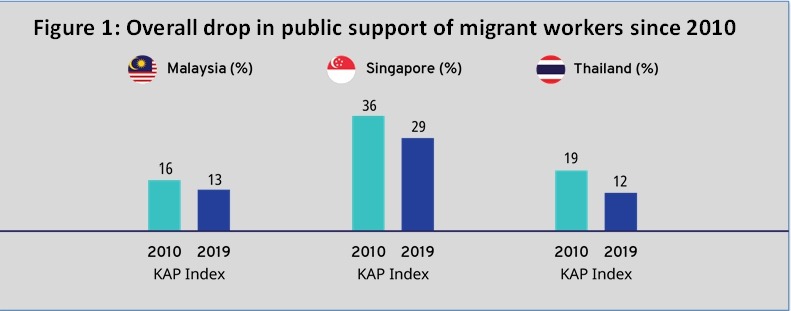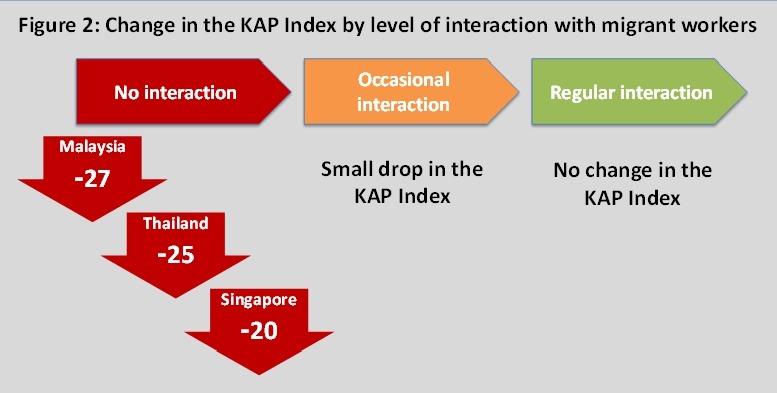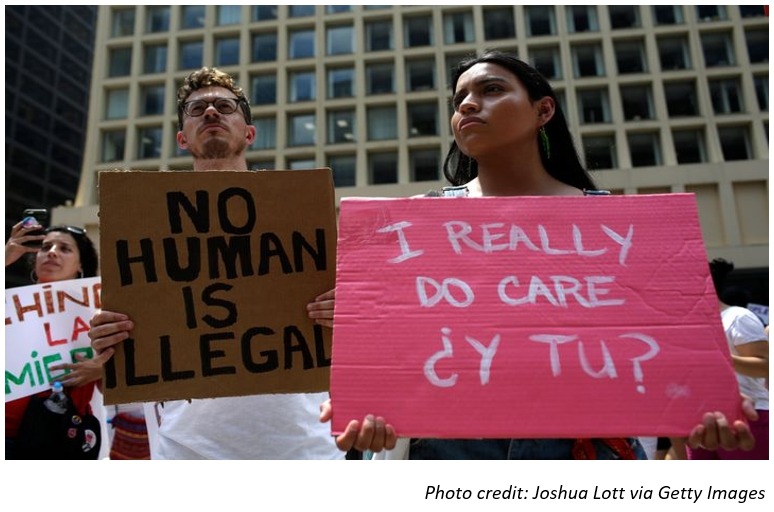Many developing countries, including Malaysia, Singapore, and Thailand, are facing labor shortages due to ageing populations and low fertility rates. Employers struggle to find local labor, particularly for physically demanding jobs, such as in the construction, fishing, domestic work, and manufacturing sectors. This undesirable work is often taken up by migrants, but instead of receiving credit they are perceived as criminals or blamed for stealing jobs.
A recent study, jointly funded by TRIANGLE and the Safe and Fair initiative, carried out by Rapid Asia, found that citizens of Malaysia, Singapore, and Thailand all have prevailing negative attitudes towards migrant workers, often expressed in the form of baseless accusations. Relatively few people are aware of the contribution migrant workers make to the economy and how reliant employers are on these workers. In a world that is becoming increasingly polarized and right-wing ideas have flourished, it may not be surprising that the study found that attitudes towards migrant workers have worsened compared to 10 years ago. Such attitudes in society can translate into condoning discrimination, exploitation, and even violence against migrant workers—and can impact policies on labor migration. Hence, it is important to understand why this is happening and what can be done about it.
To better understand the extent to which people support or don’t support migrant workers, a proven research model was used (KAP Score) that considers peoples’ knowledge, attitude, and behavior towards migrant workers. One of the model’s key indicators is the KAP Index, measured on a 0 – 100 scale. The higher the index, the more supportive people are towards migrant workers. Figure 1 below show that public support for migrant workers has declined since 2010 in all three countries. It should be noted that a score below 40 is considered very low and indicates that support for migrant workers has been rather weak for a long time.

To understand what drives attitudes towards migrant workers a number of factors were analyzed, including demographics and behavioral influences. The analysis revealed the extent to which people encounter migrant workers was the single most important underlying factor that drives how people feel towards migrants. People who have regular and close contact with migrant workers were found to be significantly more supportive of them. This may not be all that surprising given that such interactions are driven by having something in common—such as being work colleagues, playing on the same sports team, or living in the same neighborhood.
Why have attitudes towards migrant workers worsened? After all, Malaysia, Singapore, and Thailand are if anything more multicultural today than 10 years ago. If so, should we not expect to see an increase in the support of migrant workers? The answer to the question lies in polarization of attitudes. The study found that indeed, people who have more interactions with migrant workers remain relatively more supportive of them, and the level of support was not found to have declined compared to 10 years ago. However, people with lower levels of interaction with migrant workers—particularly those with no interaction—were found to be much more negative about them today than 10 years ago. Within this group, the KAP Index dropped by 20 points or more in all three countries (see Figure 2). This polarization is very evident in society today, and studies have found that unemployment coupled with the presence of a far-right party can drive anti-immigrant sentiment. This sentiment can also be amplified by social media by creating “echo chambers” that prevent people from being exposed to information that contradicts their preexisting beliefs. In light of this, the result is not all that surprising.

A key recommendation that came out of this study was to promote inclusion through social interaction and community engagement with migrant workers. As Isaac Newton said, “We build too many walls and not enough bridges.” Find the full report here.
If you found this article useful, please remember to ‘Like’ and share on social media, and/or hit the ‘Follow’ button to never miss an article. You may also want to read this article: One way to reduce forced labour
About the authors: Daniel Lindgren is the Founder of Rapid Asia Co., Ltd., a management consultancy firm based in Bangkok that specializes in evaluations for programs, projects, social marketing campaigns and other social development initiatives. Tanya Motwani is an independent consultant with a passion for social development work. Learn more about our work on: www.rapid–asia.com.

